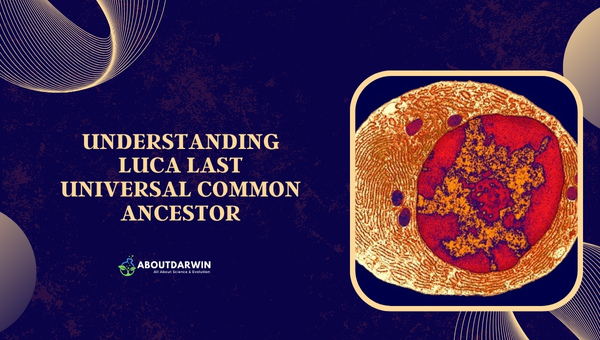Physical Address
304 North Cardinal St.
Dorchester Center, MA 02124
I’ve always been fascinated by the origin of life on Earth, and the concept of the Last Universal Common Ancestor (LUCA) has been a topic that has captured my imagination. This elusive entity represents the most recent organism from which all living beings can trace their genealogical lineage. It’s the fundamental piece of the puzzle in understanding life’s origins and the shared history that unites us all.
Most scientists believe that LUCA emerged around 3.5 to 3.8 billion years ago. While the exact nature of this primordial being remains shrouded in mystery, there are some key characteristics we can deduce from the research.
For one, LUCA likely lived in an anaerobic environment, as oxygen had not yet appeared on Earth. Secondly, LUCA probably thrived in high-temperature conditions such as hydrothermal vents, which were common during Earth’s early history.
As our understanding of LUCA’s genetic makeup and potential habitat deepens, so does our comprehension of the evolutionary stepping-stones that shaped the diverse array of life we see today. The ongoing study of LUCA helps us unravel the enigmatic story of Earth’s earliest dwelling beings and, ultimately, piece together our biological history.
The Last Universal Common Ancestor (LUCA) concept has garnered significant attention in recent years. Simply put, LUCA represents the most recent common ancestor of all current life on Earth. Although rudimentary in form, this single-celled organism marks the starting point of our planet’s diverse range of species.

Scientists believe that LUCA existed around 3.5 to 3.8 billion years ago, during the early stages of Earth’s history. At this time, the planet’s environment vastly differed from what it is today. The atmosphere lacked oxygen, and volcanic activity was abundant. In these extreme conditions, LUCA thrived, eventually leading to subsequent life forms.
There are two leading theories about the nature of LUCA:
Researchers are utilizing various techniques to get a better grasp of LUCA’s characteristics. One such method involves analyzing the genomes of present-day organisms to identify common traits among all life forms. The rationale is that any shared features are likely to present in LUCA too.
Research in the realm of comparative genomics has revealed specific trends, such as:
While it’s impossible to paint a complete picture of this ancient ancestor, ongoing research broadens our understanding of LUCA. As more data is uncovered, scientists can explore its unique features in greater detail, ultimately shedding light on the very origins of life itself.
Charles Darwin’s Theory of Evolution & Natural Selection
Tracing the evolutionary path of LUCA, or the Last Universal Common Ancestor, is an intriguing scientific endeavor. LUCA is believed to be a single-celled organism that lived approximately 3.5 billion years ago. With it being the common ancestor of all life on Earth, I’ve delved into research to understand its evolutionary pathway.

Genetic research plays a significant role in this quest, and by studying ribosomal RNA (rRNA) sequences from various modern organisms, researchers can gather clues about LUCA’s nature. These clues can help construct a “universal tree of life,” illustrating the relationships between different life forms.
There are a few key characteristics that scientists believe LUCA may have possessed:
Intriguingly, researchers have a large consensus that LUCA thrived in hydrothermal vents. These unique habitats provide a nutrient-rich, high-temperature setting where the delicate dance between various chemicals and energy sources could’ve given rise to early life forms.
I have also found some remarkable findings related to LUCA’s metabolism. Researchers have identified a set of genes present in LUCA that reveal a glimpse into its metabolic capabilities:
| Metabolic Process | Specific Enzyme Functions |
|---|---|
| Hydrogen metabolism | Hydrogenases |
| CO2 fixation | Acetyl-CoA pathway |
| Diacylglycerol biosynthesis | Glycerol-3-phosphate O-acyltransferase |
These discoveries suggest that LUCA was equipped to thrive in extreme environments, harnessing energy and nutrients from the surrounding milieu. Tracing the evolutionary path of LUCA is an ongoing journey combining genetics and Earth’s early history.
Through advances in research methodologies, we get closer to understanding our shared ancestor’s characteristics and the conditions that shaped its evolution. This knowledge allows us to glimpse back in time, providing valuable insights into the origins of life on Earth.